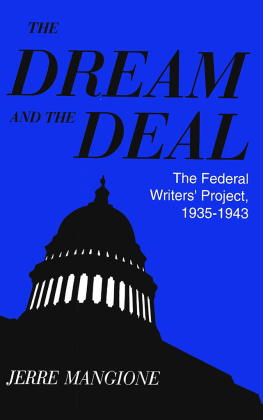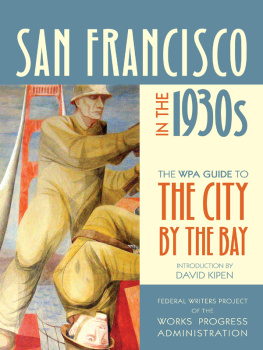Much of the labor that has gone into the making of this book is not immediately apparent. The reader, by adding the tour and side trip distances, can discover that more than fifteen thousand miles of Federal, State and county highways were traversed and carefully described by workers, and from a mere skimming of its pages will observe that all the larger cities and hundreds of lesser towns and villages have been the scene of their efforts. The succinct form of the completed volume gives little indication, however, of the vast quantity of field copymore than twelve million wordsfrom which selection and condensation had to be made, or the research embraced in the consultation of hundreds of books and periodical files and the interviewing of authorities upon many subjects in all parts of the State.
The most authoritative sources available have been used as a basis for the treatment of all controversial subjectsof which Texas, especially as to its early history, has its full shareand every effort has been made to arrive at the truth, or, where a reasonable doubt seems to exist, to present the case fairly and without bias.
Population figures, except for communities which were not listed in that count, are from the most recent official tabulationU. S. Census of 1930. Some Texas cities have grown mightily since that time, and it will be safe to assume that almost every city has gained substantially. Estimates of the 1940 population of fifteen of them appear in Part II. (Preliminary reports, giving the approximate figures of the 1940 Census for a few cities and towns, were made public after the body of the book was in type, too late for such revision as would be necessary to include them.)
No one volume of portable size could cover so large and diversified a State without a degree of condensation and elimination which must result in only a brief summary of many an interesting story, the omission of some locally important facts, and even the complete absence from tours of pleasant and ambitious communities which, because of the space requirements and the necessary test of tourist interest, had to be passed by without mention; as to this the editors can only regret the limits of what can be placed between two covers. In so extensive a work it is too much to hope that no errors have been overlooked; as to this the editors can only plead that they have sought painstakingly to achieve accuracy, and hope that the errors are few. Any such that are found and reported will be corrected in subsequent editions.
For checking and rechecking many of the facts and figures gathered, and in some cases the preparation of written material, the staff offers grateful acknowledgment to the following State consultants:
Agriculture, Dean E. J. Kyle, Texas A. & M. College; Archeology and Anthropology, M. P. Mayhall, University of Texas; Architecture, Professor Samuel E. Gideon, University of Texas, Marvin Eickenroht and Harvey P. Smith, San Antonio; Art, James Chillman, Houston, Professor Samuel E. Gideon, University of Texas, Stella Hope Shurtleff, Dallas, and Mary Locker Kargl, San Antonio; Bibliography, Julia Grothaus, San Antonio; Birds and Animals, Albert J. Kirn, Somerset, and Roy W. Quillin, San Antonio; Bus Lines, A. F. Baldus, Fort Worth; Theater, John William Rogers, Dallas; Early Mission History, the Most Reverend M. S. Garriga, Corpus Christi, the Reverend Dr. Paul J. Foik, Austin, and Dr. Carlos E. Castaeda, Austin; Forestry, E. O. Siecke, director Texas Forest Service, College Station; Geology and Paleontology, Dr. E. H. Sellards, University of Texas; History, Dr. Eugene C. Barker and Dr. Charles W. Ramsdell, University of Texas, Harbert Davenport, Brownsville, and Ike Moore, director, San Jacinto Museum of History; Hotels, Jack White, San Antonio; Industry and Commerce, Bureau of Business Research, University of Texas, and Porter A. Whaley, general manager Texas State Manufacturers Association, San Antonio; Literature and Folklore, Dr. J. Frank Dobie, University of Texas; Livestock, the late E. Berkeley Spiller, secretary State Cattlemens Association, Fort Worth; Marine Life, Clyde T. Reed, Texas College of Arts and Industries, Kingsville; Music, E. Clyde Whitlock, Fort Worth; Natural Setting, and Land, Water and Mineral Resources, Terrell Bartlett, San Antonio; Public Health, Dr. E. W. Wright, president State Board of Health, Bowie; Railroads, Edward McClannahan, San Antonio; Reptiles, Professor Walter J. Williams, Baylor Museum, Waco; Sports and Recreation, George W. White, Dallas; State Archives, Winnie Allen, Austin; Wild Animals, Will J. Tucker, Austin, and Roy W. Quillin, San Antonio; Wild Flowers, Ellen Schulz Quillin, San Antonio.
In addition to these, 2,914 local consultants and volunteer associates, a listing of whose names the limitation of space prevents, gave of their services as called upon, in the interest of completeness and accuracy.
To all this great corps of assistants, and to newspapers, libraries and museums throughout the State for their courtesy and co-operation, the people of Texas owe a debt of gratitude.
J. FRANK DAVIS
State Supervisor
Texas Writers Project












